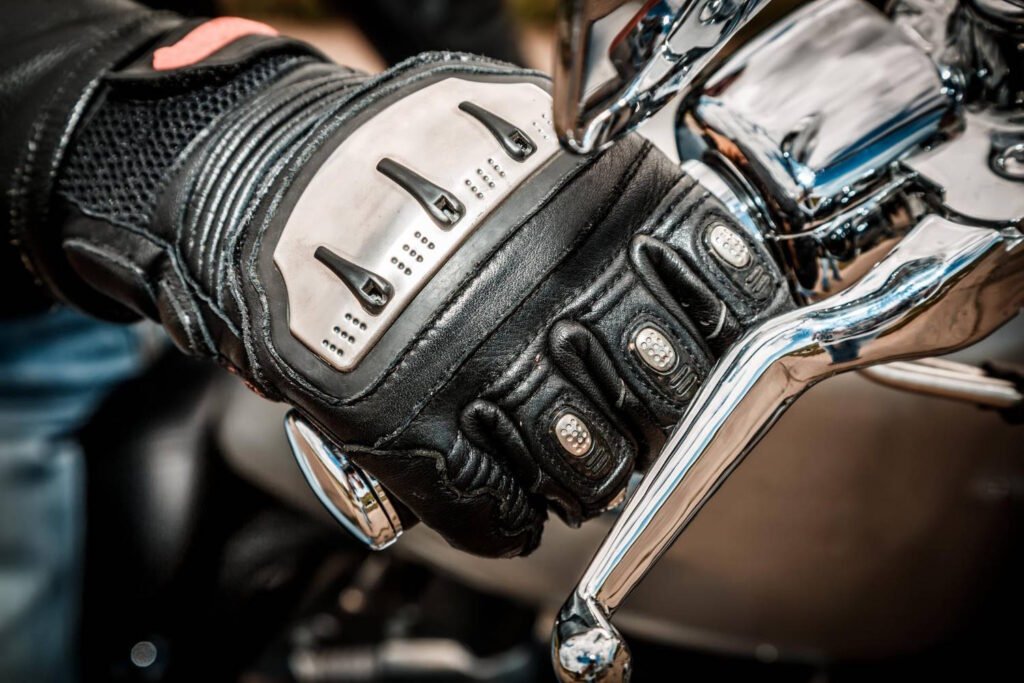A slipping motorcycle clutch can quickly turn an enjoyable ride into a roadside emergency. When your engine RPMs increase but your motorcycle doesn’t accelerate proportionally, accompanied by a burning smell and sluggish performance, you’re likely experiencing clutch slip. Let me walk you through the essential diagnostics and temporary fixes that can get you back on the road safely.
Warning Signs of Motorcycle Clutch Slipping
Before diving into solutions, it’s important to recognize what clutch slippage looks and feels like:
- Engine RPMs increase disproportionately to your motorcycle’s actual speed
- A distinct burning odor (similar to burnt paper or rubber)
- Sluggish acceleration despite firm throttle input
- Difficulty achieving smooth gear shifts
- Unusual clutch lever feel (too soft, stiff, or lacking a defined friction point)
These symptoms aren’t just inconvenient, they’re warning signs of potential damage occurring within your clutch system. The excessive heat generated by continuous friction can rapidly accelerate wear on expensive components like clutch plates and pressure plates, potentially leading to more severe transmission or engine damage.
Safety First: Preparing for Roadside Repairs
Before attempting any roadside fix, prioritize your safety:
- Pull completely off the road to a safe location away from traffic
- Activate hazard lights and deploy warning triangles or reflectors if available
- Turn the engine off completely
- Place the motorcycle securely on its kickstand or center stand
Remember that roadside fixes should be limited to temporary, simple troubleshooting and adjustments. Their primary purpose is to help you safely reach a professional service center, not to serve as comprehensive solutions for significant mechanical failures.
Quick Diagnostic Checks You Can Perform
When your clutch starts slipping, perform these immediate checks to identify simple causes:
- Inspect the clutch lever and surroundings: Look for physical obstructions that might be impeding the lever’s full range of motion.
- Check the clutch cable: Examine it for visible wear, fraying, or sticking that could prevent proper operation.
- Verify clutch cable free play: This small amount of movement before the cable becomes taut is critical for proper clutch function. Too little free play can cause clutch plates to partially engage even when the lever is released, creating friction and slippage.
- Check your engine oil (for wet clutch systems): Automotive oils with friction modifiers can cause clutch slippage. Look for the JASO (Japanese Automotive Standards Organization) specification—you need JASO MA or MA2 rated oil for wet clutches, not JASO MB.
Quick Reference: Common Symptoms & Checks
| Symptom | Potential On-the-Spot Cause | Quick Check/Action |
|---|---|---|
| Engine RPM increases without speed increase | Improper clutch cable adjustment | Check cable free play |
| Incorrect engine oil type (for wet clutches) | Check oil cap/manual for JASO spec | |
| Burning smell | Improper clutch cable adjustment | Check cable free play |
| Excessive clutch slipping due to wrong oil | Check oil type | |
| Sluggish acceleration | Improper clutch cable adjustment | Check cable free play |
| Difficulty shifting gears | Improper clutch cable adjustment | Check cable free play |
| Clutch lever obstruction | Inspect lever for debris | |
| Clutch lever feels “off” | Clutch lever obstruction | Inspect lever for debris |
| Sticky clutch cable/lever pivot | Lubricate cable/pivot | |
| Bike creeps at stops in gear | Too much clutch cable slack | Check cable free play |
Adjusting Your Clutch Cable: Step-by-Step
Proper clutch cable adjustment is often the fastest and most effective roadside fix for a slipping clutch. Here’s how to do it correctly:
Understanding Clutch Free Play
Clutch free play refers to the small movement in your clutch lever before it begins to actuate the clutch mechanism. The ideal measurement is 2-5mm between the back of the clutch lever and the clutch perch (the housing it pivots in). A quick practical check: a nickel is approximately 2mm thick, so one or two nickels can help you estimate the correct clearance.
Making the Adjustment
- Primary Adjustment Point: The Barrel Adjuster
- Locate and loosen the locknut that secures the barrel adjuster near the handlebar
- Turn the barrel adjuster clockwise (screwing it in) to increase slack/free play
- Turn it counterclockwise (screwing it out) to decrease slack/free play
- After adjustment, remeasure the free play and tighten the locknut firmly
- Secondary Adjustment Point: Lower Cable Adjuster
- If the barrel adjuster can’t achieve correct free play, use the lower adjuster near the engine
- Before adjusting, screw the barrel adjuster nearly all the way in (clockwise)
- Use open-ended wrenches to loosen the lock nuts
- Turn the adjuster clockwise to increase slack, counterclockwise to decrease slack
- Securely tighten the locknuts once the free play is in the correct range
- Use the barrel adjuster for final fine-tuning
- Lubrication
- Lubricate the clutch lever pivot point with high-quality waterproof grease
- Use a specialized cable lube tool or spray lubricant with a straw attachment to lubricate the clutch cable
Clutch Cable Adjustment Quick Reference
| Measurement Method | Typical Free Play Range | Adjustment Point | Direction for Increasing Slack | Direction for Decreasing Slack |
|---|---|---|---|---|
| Lever to Perch | 2-5mm | Barrel Adjuster on Perch | Turn Clockwise (in) | Turn Counter-clockwise (out) |
| Lower Cable Adjuster | Turn Clockwise | Turn Counter-clockwise |
When to Call for Professional Help
While simple adjustments can resolve many slipping clutch issues, recognize the signs that indicate internal component wear requiring professional assistance:
- Persistent clutch slipping after proper cable adjustment and confirmation of correct oil
- Strong burning smell or grinding/squealing noises from the clutch
- Consistent difficulty shifting gears despite adjustments
- Significant loss of power during acceleration
- Clutch pedal feels spongy, loose, or too high
- Visible damage to clutch components
- Bike lurches or struggles to find neutral when running
These symptoms often indicate worn friction plates, weakened clutch springs, excessive wear on the clutch basket or hub, or hydraulic system issues—all requiring specialized tools and expertise beyond roadside fixes.
Preventive Maintenance: The Best Fix Is No Fix
The most effective strategy for clutch longevity is consistent preventive maintenance:
- Follow your motorcycle’s recommended maintenance schedule
- Use the correct engine oil with appropriate JASO specifications
- Regularly check and adjust clutch cable free play
- Lubricate the clutch cable and lever pivot point
- Perform quick pre-ride inspections
Equally important are proper riding techniques:
- Avoid “riding the clutch” (keeping it partially engaged)
- Refrain from aggressive techniques like burnouts or excessive wheelies
- Use the correct gear for speed and load conditions
Final Thoughts
Understanding how to diagnose and temporarily fix a slipping clutch can be the difference between completing your journey or being stranded roadside. However, always prioritize safety and recognize when a problem exceeds what can be fixed on the spot.
While these roadside adjustments can provide immediate relief, they’re not substitutes for comprehensive professional inspection and repair when needed. By combining knowledge of these temporary fixes with regular maintenance and proper riding techniques, you’ll ensure both your safety and your motorcycle’s longevity on the road.



